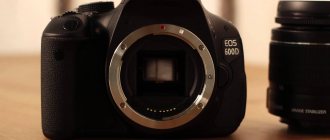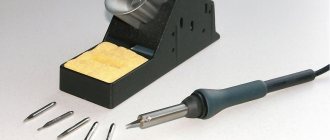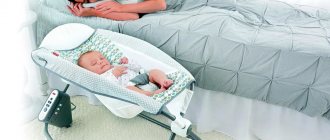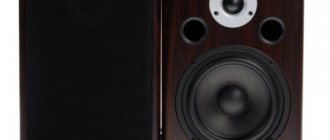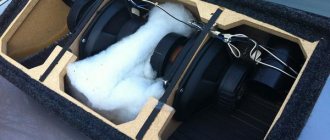From 2021, Russian television is switching to digital broadcasting. The image quality is getting better, but it does not exclude glitches. In addition to a good digital set-top box, you will need to purchase an antenna that will prevent problems from occurring. Residents of city apartments should choose an indoor antenna for digital television, which is mounted indoors.
Types of indoor antennas for digital TV
An indoor TV signal receiver is endowed with only the feature that it is mounted indoors. Different models have different power ratings: the lower this rating, the closer the antenna should be placed to the TV.
There are several types of indoor signal receivers:
- Active. Indoor antenna for digital TV, equipped with a special signal reception amplifier. It is used in rooms located far from the tower, as well as in cases where the signal needs to be divided into several TVs. The advantage is that it is powered from a power outlet rather than from a TV - therefore, such an antenna can be placed anywhere.
- Passive. A regular antenna without an amplifier. Has an attractive design. Connects directly to the TV. The disadvantage is that the device does not adjust to the signal level; on the contrary, you will have to look for a place in the room where it is better, and install the TV there along with the antenna.
- All-wave (hybrid). Receives both meter and decimeter waves of television broadcasting, which can be switched (from one to the other) if necessary.
- Meter. The simplest antenna with antennae for adjustment. Their design is simple, and the signal is picked up only at a close distance from the tower.
- Decimeter. Provides excellent signal coverage at a distance of 30 km.
Standing Wave Ratio (SWR)
Standing waves of maximum amplitude occur at a very precise combination of frequency (or wavelength) and antenna length.
Unfortunately, it is impractical and in fact impossible to have antennas that have the exact length required to form an ideal standing wave in the required frequency range. Fortunately, this is not necessary. An antenna with one fixed length can operate over a small frequency range with a small, acceptable level of detuning.
Standing waves and voltages in a line shown during an oscillation period
The antenna length must be adjusted to produce a standing wave as close to ideal as possible at the center of the operating frequency range.
SWR (standing wave ratio) meters measure the ratio of transmitted energy to reflected energy, and this ratio should be as close to 1:1 as possible.
Small adjustments can be made by adding passive components to the circuit between the final gain stage and the antenna. Small deficiencies in antenna tuning can cause a potential difference to appear at the final amplification stage, heating the final section of the transmission line. A large imbalance can cause a large potential difference to be applied back to the transmitter circuit, causing dielectric breakdown, arcing and failure of the final amplifier.
Selection criteria - what to look for when choosing an indoor antenna for digital
Indoor antennas for digital TV are an inexpensive pleasure. Their cost does not exceed 1000 rubles. Most models are presented in an interesting external design, so some tend to focus primarily on this factor, and only then consider the technical characteristics.
To select a suitable model, you need to pay attention to the following criteria:
- The ability of the antenna to receive decimeter waves (UHF, UHF) is the main parameter that should be taken into account. Digital broadcasting is carried out precisely in the decimeter range.
- Possibility of receiving DVB-T2 signal . This is an indicator of the standard by which Russian digital television broadcasts.
- Amplifier power . This criterion is selected taking into account the distance of the room in which the antenna will be hung from the television center. The farther away, the more powerful the receiver should be. The minimum power indicator is 30-40 dB.
- Passive or active power supply . In the first case, the antenna will be connected directly to the TV and receive electricity from it. It is economical and aesthetically pleasing. The active signal receiver is powered from a separate outlet.
- Ability to catch FM waves . Standard digital broadcasting provides 20 TV channels and 3 radio stations. Not all antennas are capable of picking up radio waves.
- Is there a signal amplifier included ? This complementary element will be useful for those who live on the outskirts of the city or in a village where the signal level is weak.
The selection criteria are simple; the most important thing is to correctly assess the distance of your apartment from the television center.
Antenna classification
There are many types of antennas for different applications such as communications, radar, measurement, emulation of electromagnetic pulse (EMP), electromagnetic compatibility (EMC), etc. Some are designed to operate in narrow frequency bands, while others are designed to to emit/receive transient pulses. Characteristics of transmitting antennas:
- Physical structure of the antenna.
- Operating frequency ranges.
- Application mode.
Below are the types of antennas according to physical structure:
- wire;
- aperture;
- reflective;
- lens antennas;
- microstrip antennas;
- massive antennas.
Below are the types of transmitting antennas depending on the frequency of operation:
- Very Low Frequency (VLF).
- Low frequency (LF).
- Mid Frequency (MF).
- High frequency (HF).
- Very high frequency (VHF).
- Ultra high frequency (UHF).
- Super High Frequency (SHF).
- Microwave wave.
- Radio wave.
The following are the transmitting and receiving antennas according to application modes:
- Point-to-point communication.
- Broadcasting applications.
- Radar communications.
- Satellite connection.
Terrestrial TV antenna: what to choose for your dacha
You can say exactly which antenna to install at your dacha only in relation to each specific case. When choosing, take into account:
- location - plain, hill, lowland;
- the presence or absence of forests and large trees near the house;
- distance to the nearest repeater.
The main importance is the distance to the TV tower and which one. height you can raise the antenna. Sometimes every meter matters.
Indoor or outdoor
Indoor antennas can only be installed if the repeater is in your direct line of sight. If you can see a TV tower from your summer cottage, you can try it. In order not to waste money, you can make the most simple antenna with your own hands: take a piece of wire, connect it to the corresponding connector on the TV, and walk around the room with this “antenna”, climb higher to the ceiling, closer to the window, etc. If at least some signals are caught, you can try to make or buy an indoor antenna.
Outdoor antennas “catch” tens of kilometers from repeaters
If during all your movements there are no signs of a clear signal, you need an outdoor antenna, but for a reliable reception area (with lower gain). For all other cases, when the distance to the tower is tens of kilometers, an external antenna is definitely needed.
Broadband or narrowband
Since terrestrial television is broadcast in two bands - decimeter and meter, there are antennas for these bands. If the receiver “catch” a signal in only one band, they are called narrowband. They are available only for UHF or only for VHF frequencies.
There are also broadband (also called all-wave) - their design is designed so that it is possible to normally receive a signal at all frequencies. They are usually bulkier and heavier and have a long shaft. But they put up with this - a broadband television antenna for a dacha can “catch” more channels. That's why they buy them most often.
Active or passive
More attention should be paid to whether it is better to install an active or passive antenna. An active device is a device with an amplifier built into the housing. Passive ones are just hardware for which you need to buy an amplifier separately.
Active receivers with a built-in amplifier are cheaper, receive more channels, but they have a significant drawback: amplifier boards often break. Any more or less serious thunderstorm, and channels that were previously clearly received begin to “snow” or disappear altogether. Replacing the board can help the problem. To do this, you need to climb onto the roof, remove the antenna, change the board, install it again and configure it. This procedure can be repeated after each thunderstorm.
Even if thunderstorms did not affect the performance of your country antenna, still after a year and a half the number of well-received channels decreases. The quality gradually gets worse, and sooner or later, you notice that it is no longer possible to watch. The reason is oxidation of contacts and elements on the board. The receivers on the antenna are far from sealed and dust and moisture get inside, destroying the contacts and tracks. Therefore, the average lifespan of an active antenna is about a year. If it's not a thunderstorm, oxidation will finish it off.
The best antenna for a summer residence: inactive with a separate amplifier
There is nothing to help with a thunderstorm, and oxidation can be significantly slowed down if immediately after purchase, the board is filled with silicone on both sides. This will protect contacts and elements from oxidation. No one will repair it anyway, if the board “flies”, you buy a new one and put it in its place. That's all the repairs. It is also useful to seal the cable connection point. Here, too, due to oxidation, there are large signal losses.
Passive antennas with separate amplifiers are good because the hardware is installed above the roof, and the amplifier is in the attic. Replacing a circuit board in the attic is much less of a hassle than replacing it on the roof. Especially in winter. They “catch” fewer channels, but the picture is “cleaner”.
There is one more plus: individual amplifiers have two adjustments - separately for the UHF range and MV. This is useful, since sometimes some signals come with a much higher level and they “clog” weaker ones. Then there is an overlap of sound and/or image, in some cases, if some signal is very strong, it is completely “snowing”. By adjusting the sensitivity of the ranges you can save the situation. So passive antennas with separate amplifiers for the garden are the best choice.
Samsung and LG TVs generally have a “weak signal” function. In this case, you may not need an amplifier at all. Install a passive antenna at your dacha, turn on the mode, and tune in the channels. It should be good to show at least 5-6 channels.
To ground or not
Another problem that needs to be solved is whether the TV antenna for the dacha should be grounded. On the one hand, this is often the highest point. On the other hand, if it is grounded, it will catch any lightning strike that is nearby. Accordingly, you will have to change the board every time, as it will fail.
If you decide to ground the antenna, attach the cable braid to a metal rod and ground the rod
For this reason, “antenna specialists” insist that they do not need to be grounded. Especially if the device is located below the power wires. Lightning will then strike the highest grounded point. The main thing is that it is not your antenna.
High beam antennas
Sharply focused is, of course, a strong word. The viewing angle of these antennas is narrowed to 40, rarely 30 degrees, and the rear lobe is suppressed by 60 percent. But this also gives a good result. Such a television antenna receives at a distance of up to 30 km from the television center. They are:
1) wave channel;
2) log-periodic.
Externally, the “wave channel” antenna looks like a half-wave dipole with one horizontal rod on which several whiskers (directors) of different lengths are located. A log-periodic antenna has two such rods and the directors “jump” from one to the other, gradually increasing the length towards the end opposite to the direction of the television tower. Moreover, its last “piece of hardware” is also equal to half the wavelength.
The main parameter of a highly directional antenna is the signal gain. This value is measured in decibels. The more directors (transverse pieces of iron), the higher it is. A standard five-element “wave channel” television antenna has a gain of 6–7 dB. For a log-periodic antenna of the same quality, the number of directors must exceed 10.
If the antenna data sheet indicates a gain greater than 15 dB, then this is a deception and a scam.


